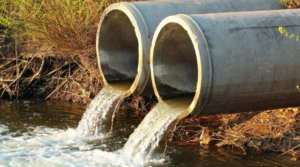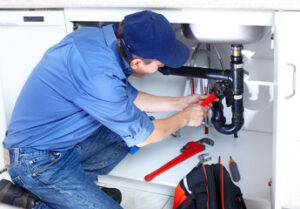Liquid Waste Disposal Perth is a big responsibility and can pose major environmental risks. If not disposed of correctly, this waste can find its way into vital watercourses, causing untold damage to wildlife and the environment.
Businesses should practice pollution prevention strategies to reduce the amount of liquid waste they produce. This will also help them avoid fines and ensure proper waste management.

Liquid waste disposal can cost a lot, depending on how much is being disposed of and how it is being treated or transported. This type of waste can be hazardous, so special containers and vehicles must be used to prevent leaks and spills during transport. In some cases, the transport route must be planned carefully to ensure that other water sources are far enough away from the liquid waste to avoid contamination. The costs of this process can run into the millions, especially when it involves a large industrial plant.
The cost of dealing with liquid waste can be high, but the long-term effects of incorrectly disposing of it are even more devastating. Unlike dry waste materials, solid barriers cannot contain liquid wastes and can soak into the ground and soil around them. This pollution carries over to any plants and animals that come into contact with it, contaminating them as well. It can also soak into the groundwater, polluting it as it makes its way to rivers and lakes.
Fortunately, there are many options for managing this kind of waste. For example, disinfection methods can treat some liquid waste and render it less harmful. This can make it suitable for land application, where it is used as a crop fertilizer. In some cases, the liquid waste can be burned in an incinerator. However, this method could be better because it can release toxic contaminants into the air and contribute to climate change.
A more environmentally friendly option is to compost liquid waste materials. This can reduce the amount of waste that needs to be deposited in landfills, and it is also much cheaper than the other methods. This method can be used for non-hazardous liquid waste, as well as e-waste.
Another option for dealing with liquid waste is to dispose of it at a wastewater treatment plant. This type of facility will treat the waste, and it can then be reused for irrigation or in industrial processes. This is a much safer option than ocean dumping, which is a practice that has been banned in many countries.
Hazardous Materials
When improperly disposed of, liquid waste can inflict severe damage to the environment and human health. It can disrupt the balance of aquatic ecosystems, kill marine organisms and seep into soil, contaminating groundwater and destroying natural habitats. It can also contaminate drinking water sources and make people ill. Improper disposal of hazardous liquid waste can lead to gastrointestinal illnesses, heavy metal poisoning and other severe conditions.
Liquid waste can come from a variety of sources, including industrial processes, municipal sewers and stormwater runoff. It may contain organic compounds, chemical solvents, industrial sewage or pharmaceutical and manufacturing waste. Industrial processes produce effluents that contain heavy metals, such as mercury, cadmium and lead. Combined with other pollutants, these contaminants can pollute waterways and cause environmental hazards.
The process of disposing of liquid waste involves treating it to remove hazardous materials and separating non-hazardous wastes. There are many different treatment methods for this purpose, some of which involve physical techniques such as sedimentation and filtration. Others are based on chemical treatments such as neutralization, oxidation and reduction. Biological treatments are also possible, which use microbes to break down organic pollutants. Incineration is another option, but this method can release harmful pollutants into the air.
Once the waste is treated, it is usually disposed of at an authorized facility that can recycle or dispose of it safely. This process is regulated by federal and state laws. It is important to understand the laws and regulations of your area before you begin disposing of liquid waste.
It is not legal to dump untreated liquid waste in the ocean. This practice is illegal because it disrupts the natural balance of aquatic ecosystems, killing marine organisms and threatening the lives of humans.
The law requires that all liquid waste is treated and disposed of according to strict standards. These include identifying and classifying the waste based on its potential harm to the environment and human health, selecting the appropriate disposal method and complying with the laws and regulations.
Unlike solid waste, which is typically disposed of in landfills, liquid waste must be processed before it can be buried. This means that the waste must be stored in a secure facility until it is ready to be treated and disposed of. It must be protected against leaks and other environmental disasters, and should be monitored regularly to detect any problems. The facility must have an emergency plan and the ability to respond immediately if a disaster occurs.
Regulations
Whether in a hospital facility or an industrial production plant, the creation of liquid waste poses unique challenges that require strict regulation. If not handled properly, chemical and heavy metals can seep into water sources and contaminate soil. This can have a devastating impact on the surrounding environment and may even make people sick. Fortunately, proper management of these substances is possible with the help of professionals who specialize in liquid waste disposal.
When dealing with flammable liquid waste, it is important to adhere to all EPA and state regulations. This includes proper labeling, storage and regular inspections of storage containers. It is also essential to be aware of any changes in regulations to ensure compliance and avoid penalties.
Liquid waste disposal is typically done by placing the waste in special disposal barrels or bins that are then transported to an approved dump area. This method is simple and inexpensive, and it can help businesses stay compliant with regulated standards.
However, there are some circumstances where it is not feasible to transport the liquid waste to an approved location. This may be due to a lack of facilities or the cost of transporting the waste. In these cases, a safer option is to use superabsorbent polymers (SAPs) to solidify the waste and prevent it from spilling or running off into the environment.
Another common way to deal with liquid waste is to store it in satellite accumulation areas near the point of generation. This is usually sufficient for small facilities, but larger ones will need to follow the guidelines in their hazardous waste management plans. These guidelines can include limiting the amount of waste stored on site to less than 55 gallons, and prohibiting the movement or relocation of hazardous waste away from where it was generated.
Finally, it is important to remember that free liquids are not permitted in landfills. This is because they can quickly transport contaminants into environmental receptors and cause geotechnical failures. This is why it is so critical to separate liquid waste from other types of waste.
If you produce a lot of liquid waste, it is worth investing in the equipment and training necessary to safely and responsibly dispose of it. This will protect the environment, your staff and your bottom line.
Options
Depending on the type of liquid waste that needs disposal, there are several options available. These include dewatering, root-zone treatment and composting. Liquid waste recycling and reuse is also an option for businesses that want to reduce their environmental impact.
Another common option is chemical treatment, which involves adding chemicals to liquid waste to neutralize harmful pathogens and make them safer for disposal. This is a good option for bodily fluids and some dialysis wastes, but it must be done properly to ensure compliance with regulations. Incineration is another method that uses scorching temperatures in specialized furnaces to burn liquid waste and turn it into ash and gases. This is a good option for hazardous wastes such as acids and chemicals, but it can be costly to build an incineration plant.
A final option is to use a solidification agent to make liquid waste into a thicker, more compact material that is easier to transport and dispose of. This process uses binding agents such as asphalt or cement to bind the waste materials and make them much harder and more rigid, which also makes them less likely to spill or leach into the environment. This method is less expensive than incineration, but it may require a bigger storage area and can have negative impacts on the environment.
Choosing the best method for disposing of liquid waste depends on many factors, including its environmental risk and the availability of land space. The ideal disposal site should have stable soil to keep the waste in place and prevent shifting and leaks. It should also be far enough away from well water sources so that contaminated runoff doesn’t contaminate groundwater supplies.
If you’re unsure of the best way to dispose of liquid waste, consult a rubbish removal company that specializes in handling hazardous waste. This will help you determine which methods are most suitable for your business and comply with local regulations. They can also advise you on the proper handling and storage of your wastes, so that you can avoid penalties and fines. They can even provide you with containers and bags for safe transportation and storage of your wastes.
